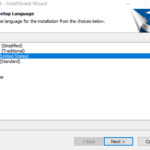IT experts oftentimes find themselves craving for virtualized machines over the course of their work – it’s no surprise that majority of x86 server workloads has been virtualized – 80% to be exact, with each server running about 16 virtual machines (VMs) on average.
Selecting your machine virtualization tool: VMware vs VirtualBox?
By simultaneously working on different VMs with only one device, one can:
- Effectively prevent critical error occurring during development of new software
- Economically deploy/test new software on multiple machines without running different devices
- Establish and control flexible working environment comprised of both remote employees and employees using their own devices
- Enable the usage of old software on an otherwise incompatible newer operating system
- Allow flexible switching between different tangible hardware platform
By throwing VMware vs. VirtualBox into the search box, chances are that you are trying to find an ideal solution so that your x86 system can handle the virtualized workload you desired.
Even though at the first glance it appears VMware and VirtualBox are very comparable serving their purpose, there are several subtle differences that that tell them apart and require thorough understanding of these differences in order to make a well-rounded selection.
AT FIRST GLANCE
With VMware you can actually do a lot of stuff, ranging from managing peripheral devices connected to a secured IT system, protecting such devices, to setting up private cloud, as well as machine virtualization.
What will be discussed here is the VMware Workstation and VMware Fusion, the former is compatible with Windows and Linux, while the latter exclusively serve Mac machines. The latest release, VMware Workstation 15, first came out in September 2018 and has gone through several continuous updates until recently.
Undeniably, VMware is the leader in its market. They have the first comer advantage after pioneering the virtualization of x86 architecture and successfully commercializing this technology. Their position is heralded as in Gartner’s 2016 Magic Quadrant for x86 Server Virtualization, which placed VMware alongside Microsoft in the “leader” quadrant. The praise, though might not be totally in line with desktop virtualization that we are discussing, still reassure us of their capability in the area.
Oracle acquired the development of VirtualBox in 2010, in a move to compete in the same market of VMware’s Workstation. VirtualBox works on all x86 platform, and the latest version is 6.0, with most recent build released on February 21, 2020.
The basic VirtualBox package is free, but user will need to install extension pack in order to access additional features such as USB functionality, Remote Desktop Protocol (RDP), and Preboot Execution Environment (PXE). Such extension pack will also be free, provided that it serves only personal or educational purpose. Commercial use of the license can be purchased, which then grants users the use of the package on multiple machines for commercial purposes.
COMPARING VMWARE AND VIRTUALBOX
VMware’s Workstation offers two editions, “Player” and “Pro”, which differs mainly in term of the Pro version’s capability to run multiple VMs simultaneously, created secured VMs, and share VMs as servers.
Workstation Pro is available for free trial during a courtesy period. At the end of this period, you will be requested to purchase a license and acquire associated product key to continue the usage. The Player edition, on the other hand, is free of charge for non-commercial use, but further supports for paid licensed user are also available.
What VMware users gets out of the package includes:
- Mass deployment
- Host/guest file sharing
- USD smart card reader support
- USD 3.0 support
- Snapshots
- VM sharing
- Integration w/ vSphere/ESXi server
- Integration w/ vCloud Air
- 3D graphics with DX10 and OpenGL 3.3 support
VMware Workstation running Mac OS X on a Windows 10 computer.
Workstation is able to support virtualizing up to 16 CPUs, with 8TB of disk space and 64 GB of memory. The attractiveness of Workstations also lies in some supplementary features such as networking and printing, which allows the VMs to connect to the same hardwares in the network without any additional set-up. Most of the time lacking such features is not detrimental to the main task that VMs are needed for, but having these for sure will constitute an end user-friendly working environment. VM cloning is another example of such features when it allows user to create a duplicate VMs while still preserving disk space.
On the other side, VirtualBox can provide both similar core features, as well as their own unique highlights:
- Cross-platform compatibility (installs on Mac, Linux, Windows, Solaris computers)
- Command line interaction
- Shared folders and clipboard
- Special drivers and utilities to facilitate switching between systems
- Snapshots
- Seamless mode (lets you run virtual applications next to normal ones)
- Limited support for 3D graphics (up to OpenGL 3.0)
- Can exchange disk images with VMware
- VM video capture
- VM disk image encryption (with extension pack)
- Virtual USB 2.0/3.0 support (with extension pack)
Noticeable inferiority of VirtualBox vs. VMware is that the graphic capacity of VirtualBox is less powerful than VMware. If you plan to perform heavy tasks, such as simultaneous operation of multiple VMs, then you should pay attention to this. Also, VirtualBox does not support the integration with vSphere, ESXi or vCloud Air, so you might find working in VirtualBox environment less uninterrupted.
VirtualBox running Windows 7 on a Mac OS X computer.
However, as VirtualBox’s comprehensive service packages are built and run on top of a core version, they inherit from the core version the convenient ability to work across different x86 operation systems. This might rebalance the comparison a bit in favor of VirtualBox if you are looking for a solution to work outside of the narrowed space that VMware is focusing on.
Saving your progress
What happens when things go wrong amid the development of your new software on a VM, to an extent that it does not allow you to restore the OS to the desirable state? Restart from scratch? Luckily both system have foreseen such scenarios and both provide the Snapshot feature. What this does is that you can keep a record of the OS state prior to potentially risky steps and, should the adverse scenarios happen, rewind the OS to the previous checkpoint.
Having this kind of feature seems to be the most important selection criteria even when you are considering any other virtualization tool. Imagine how much time, effort and frustration that you can save by being able to start over midway, providing unstable nature of newly developed software?
Takeaways
Among the vast arrays of features to consider, your decision may be likely a result of your subjective decision: it’s what you prefer – security, flexibility, customization or sharing ability – that helps you decide.
If this is not the case, then it helps to keep several things in mind. First, VMware’s strength is its ecosystem of connected solutions, which makes Workstation/Fusion ideal for people whose works already deeply involved other elements in this ecosystem. Due to this reason, most of the time VMware will fits for enterprise use. On the other side, VirtualBox should be preferred if your needs require a minimal number of VMs. Also, VirtualBox will be your choice if you want to work with a CMD interface in addition to Graphic interface.
Still pondering over where to go between VMware vs. VirtualBox? Talk to us, or explore your needs in details using our production comparison tools for a customized match.







